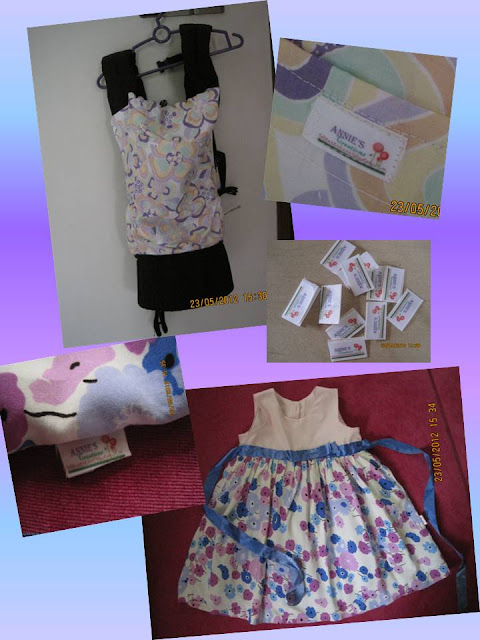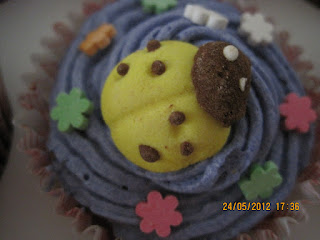Would like to share how I travelled to and from the other part of the globe while tagging along a boxful of expressed breast milk.
I was on a business trip to Orlando, USA in May 2010 for 10 days while still breastfeeding my twin girls. As my milk supply was low, combined with the fact that I was feeding a pair of twins, naturally, I expressed as much as I could during the day. My pumping schedule was packed and frequent, as much as 9 times a day.
I travelled by Malaysia Airlines (MAS) to Los Angeles and took a connecting flight to Orlando from there. A large Coleman cool storage box containing industrial strength ice packs was checked in along with my luggage. Equipped with my Avent manual breast pump and a cold storage bag containing sheets of ice packs, I pumped in the plane and the airport. It was fortunate that I travelled in business class. Thus, occupying the toilet to pump and asking the air stewardess to store my ebm in their freezer was not a problem. It also helped that I occupied the toilet for pumping during non peak times; meaning time when the meals were over and other fellow passengers were sleeping.
The flight from KL to LA included a 2 hour stop in Taipei in which all the passengers were required to disembark and carry all our belongings. I had then 2 bags of ebm of 9oz each. The custom check at the Taipei airport did not question about the ebm at all.
Since the flight from Taipei to LA was a long one, I expressed up to 3 times during the entire journey to LA. In the 4 hours gap while waiting for the connecting flight to Orlando, I pumped at the airport's toilet. Not the best place to pump, but I was left with no other choice.
The flight from KL to LA included a 2 hour stop in Taipei in which all the passengers were required to disembark and carry all our belongings. I had then 2 bags of ebm of 9oz each. The custom check at the Taipei airport did not question about the ebm at all.
Since the flight from Taipei to LA was a long one, I expressed up to 3 times during the entire journey to LA. In the 4 hours gap while waiting for the connecting flight to Orlando, I pumped at the airport's toilet. Not the best place to pump, but I was left with no other choice.
The immigration officers were very understanding upon knowing that I was carrying ebm. When arrived at LA and once I retrieved my luggages and cooler box from the baggage claim, I put the ebm that I expressed in the plane to the cooler box and checked them in again for the flight to Orlando.
During my 10 days stay in the hotel, I sent my ebm to be stored at the hotel's restaurant's kitchen. The staff were very helpful in this matter. Throughout my stay in US, I had up to 40 bags (12oz each) of ebm.
In preparation for the flight home, I put all the ebm in the cooler box which was lined with 3 packs of industrial strength ice packs. After putting in all the ebm, a towel was placed on top, covering all the ebm and ice packs and the lid of the cooler box was then closed. The towel is used to contain as much coolness as possible in the cooler box. Upon closing, the cooler box was then tied with ropes and labelled with the words 'Human Breast Milk. Handle with Care' at both sides. The ropes were not tied too tightly though, for the ease of untidying should the custom required any inspection.
As with the journey from KL - LA, the flight back home saw me expressing 3 times in the plane. Once again, I requested the ebm to be put in the plane's freezer. The air stewardess were very helpful in this matter. There was a 2 hour stopover in Taipei in which by that time, I had 4 bags (12oz each) of ebm with me. Going through the custom check was a breeze. No one raised any question.
As with the journey from KL - LA, the flight back home saw me expressing 3 times in the plane. Once again, I requested the ebm to be put in the plane's freezer. The air stewardess were very helpful in this matter. There was a 2 hour stopover in Taipei in which by that time, I had 4 bags (12oz each) of ebm with me. Going through the custom check was a breeze. No one raised any question.
After almost 24 hours from the time I left the hotel to the airport, checking in, flight and journey home from the airport, all the ebm were still solidly frozen upon reaching home. My mother in law and the maids were very amazed by the amount of ebm I brought home from the trip to US. I myself was pleased with myself for being able to pull it through. It is not that hard actually, if one knows what to do and get prepared in advance.
From experience, I find that using milk storage bottles is better than storage bags as the pressure in the cabin may cause the bags to burst; which happened to some of my ebm which I expressed during the flight. The frozen ebm in the cooler box were ok as they were already frozen and not affected by the changes in the pressure. Also, it is ok to not sterilise the breast pump as long as it is placed in the storage bag along with the ice sheets.
 |
| EBM stored in cooler box along with dried ice pack for check in |










































